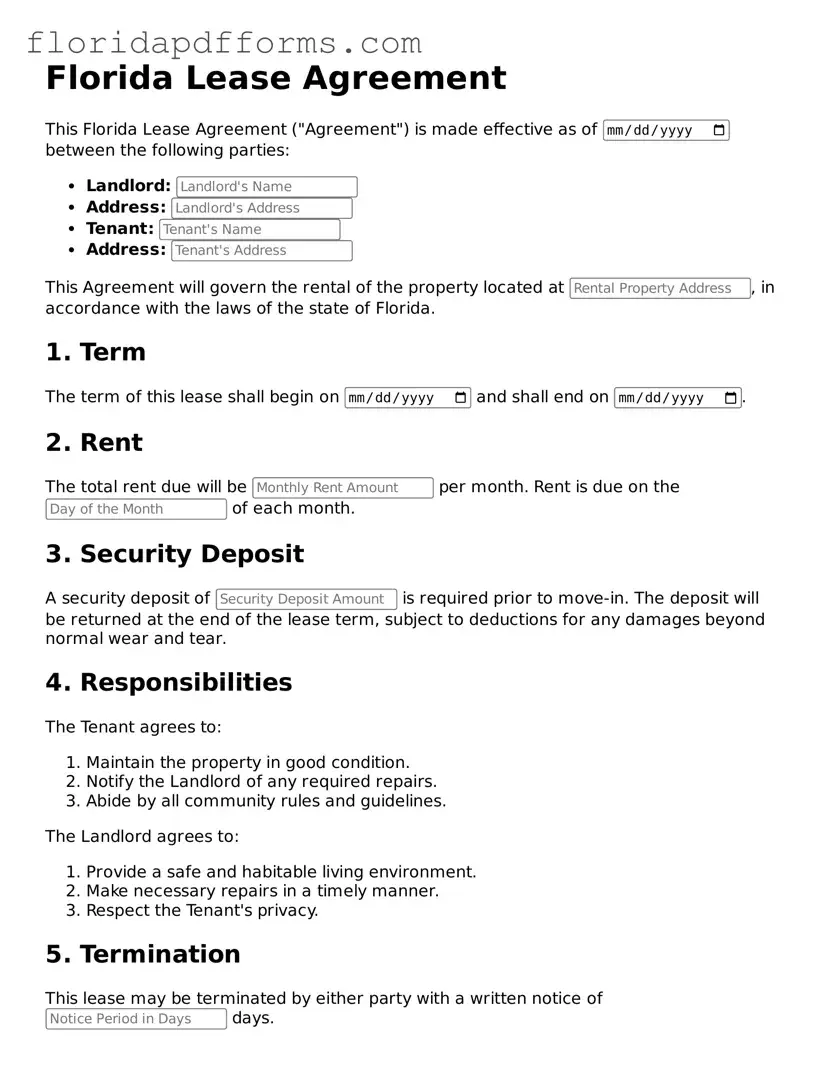The Florida Rental Agreement is similar to the standard Lease Agreement used across many states. Both documents outline the terms of renting a property, including the duration of the lease, rent amount, and responsibilities of both the landlord and tenant. They serve to protect the rights of both parties and ensure that everyone understands their obligations. The main difference often lies in state-specific laws that govern rental agreements, which may vary from Florida to other states.
The Commercial Lease Agreement is another document that shares similarities with the Florida Lease Agreement. This type of lease is specifically designed for renting commercial properties, such as office spaces or retail locations. Like the Florida Lease Agreement, it includes terms regarding rent, duration, and maintenance responsibilities. However, it often contains additional clauses that address business-specific needs, such as zoning laws and use restrictions.
The Month-to-Month Rental Agreement resembles the Florida Lease Agreement in that it also outlines the rental terms between a landlord and tenant. The key difference is the flexibility it offers. This agreement allows either party to terminate the lease with short notice, typically 30 days. It’s suitable for those who may not want to commit to a long-term lease but still need a formal arrangement.
A Roommate Agreement is similar in purpose to the Florida Lease Agreement but focuses on the relationship between individuals sharing a rental space. This document clarifies each roommate's responsibilities, including rent payment, utility sharing, and house rules. While it may not be legally binding in the same way a lease is, it helps prevent misunderstandings and conflicts among roommates.
The Sublease Agreement shares similarities with the Florida Lease Agreement in that it allows a tenant to rent out their leased property to another person. This document must comply with the original lease terms and often requires the landlord's approval. It outlines the rights and responsibilities of the subtenant, ensuring that both the original tenant and the landlord are protected.
The Lease Purchase Agreement combines elements of both a lease and a purchase agreement. Similar to the Florida Lease Agreement, it allows a tenant to occupy a property while giving them the option to buy it after a specified period. This document includes terms about rent, purchase price, and maintenance responsibilities, making it a unique hybrid for those considering homeownership.
The Rent-to-Own Agreement is another document that closely resembles the Florida Lease Agreement. It allows tenants to rent a property with the option to buy it later. This agreement specifies the rental terms and outlines how a portion of the rent may apply to the purchase price. It provides a pathway to homeownership while still maintaining the structure of a lease.
The Lease Extension Agreement is similar to the Florida Lease Agreement in that it modifies the existing lease terms. When a tenant wishes to continue renting a property beyond the original lease term, this document formalizes the extension. It typically includes updated terms, such as new rental rates or changes in duration, ensuring both parties are in agreement moving forward.
